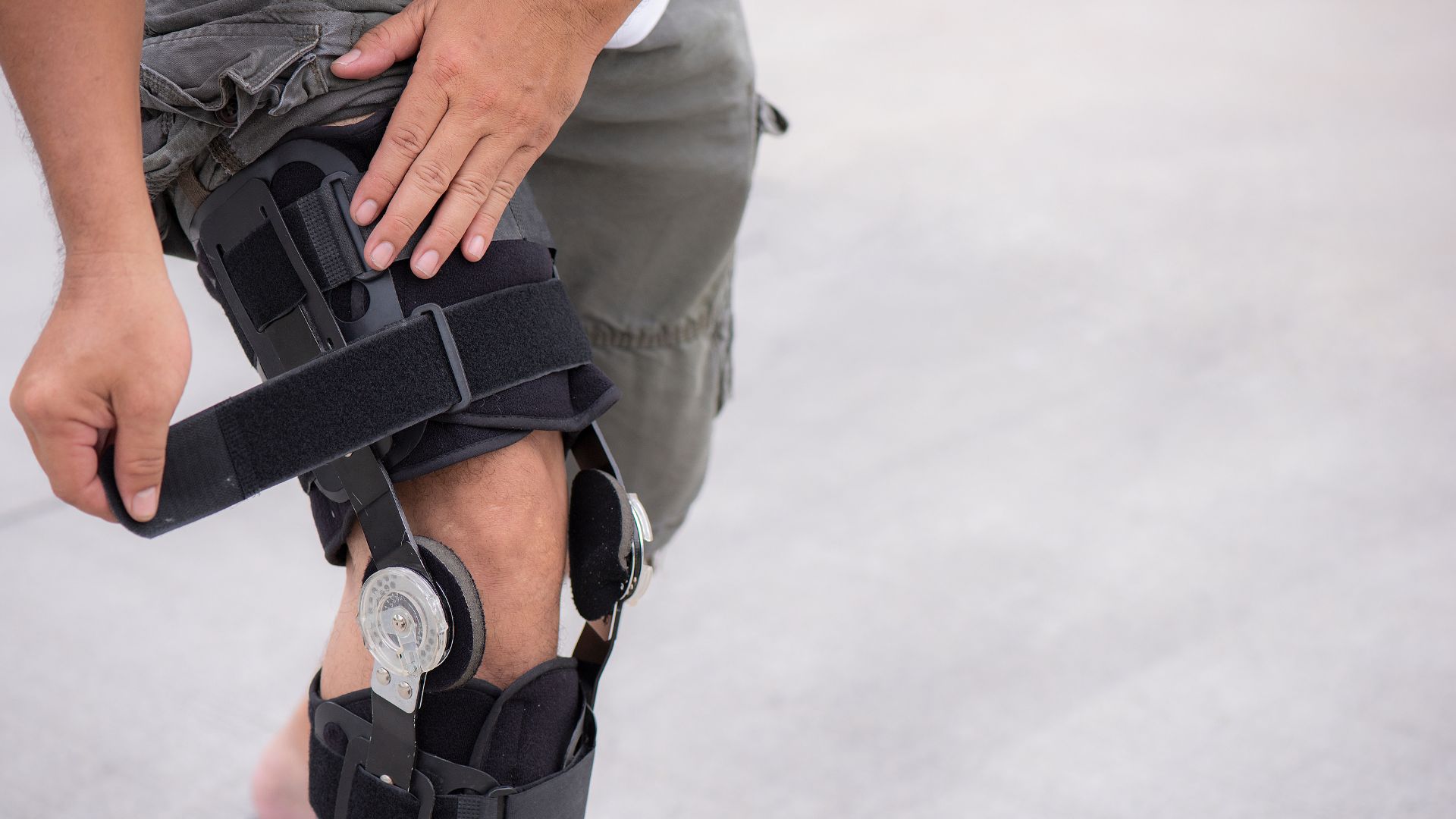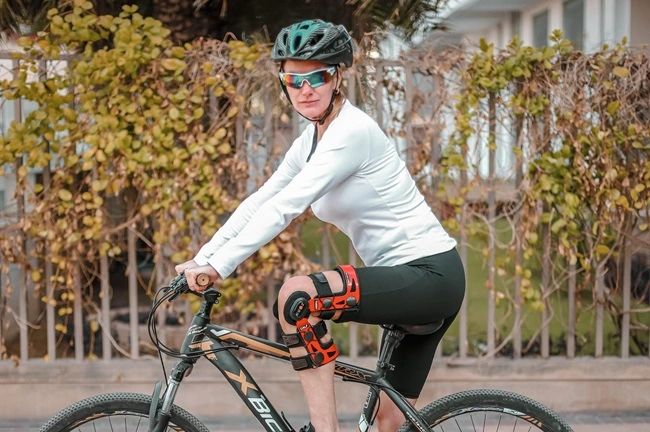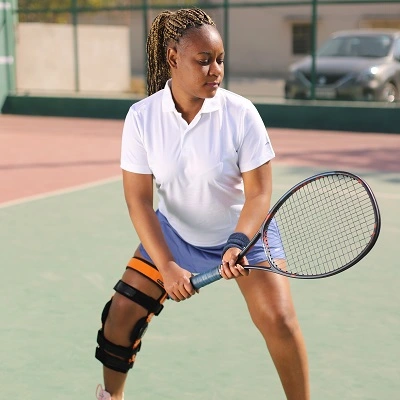Knee pain can really throw a wrench in your plans. Whether it’s from hitting the pavement too hard, an unexpected twist, or the daily grind catching up with your joints, it has a way of turning even simple tasks into daunting challenges. Trust us, we understand because we’ve walked that painful path ourselves. In our quest for relief and recovery, we stumbled upon an effective ally: knee braces. More than just support gear, these braces provide essential control over your knee’s movement, aiding in healing while preventing further injury.
In this blog post, we’re diving deep into how our braces have emerged as a beacon of hope for those looking to rehabilitate their knees successfully. From boosting recovery speeds to offering much-needed stability and alleviating pain along the way, you’ll discover why incorporating a brace might just be the pivotal turn towards regaining your stride – safely and with confidence.
Excited to uncover these insights? We’re right there with you – let’s dive in!
Understanding Knee Braces
KGOI Knee braces are supportive devices that help our knees during recovery. They can provide stability and comfort while we heal from injuries or surgeries.
What are knee braces?
KGOI braces are supportive devices for the knee joint. They come in different types, like unloader braces and functional braces. Each type serves a specific purpose in rehabilitation and injury prevention.
These devices help stabilize the knee joint. Braces limit excessive movement while reducing discomfort. They provide control of external knee rotation and can improve joint stability during recovery.
Wearing a brace promotes tissue healing around the knee. This is important because knees often need more time to recover from injuries. Slip-on braces compress tissue, boost blood flow, and support healing tendons and cartilage, aiding overall rehabilitation efforts effectively.
Why are they used?
KGOI braces are used to help support the knee and promote healing. They stabilize the joint and limit excessive movement. This helps to reduce discomfort and prevent further injuries.
Many people wear them during physical activities. They provide vital aid for athletes and those recovering from injuries. We find that these braces can help us maintain mobility while allowing our injuries to heal.
Different types of braces serve various purposes. Unloader knee braces help to relieve pressure on damaged areas. Functional braces offer support for ligament injuries. Slip-on braces compress tissue around the knee and boost blood flow.
This support helps tendons and cartilage heal. We’ve seen how effective these braces can be in our rehabilitation journey. They contribute to faster recovery and improve performance in the long run.
Types of knee braces
Knee braces come in different types. Each type serves a specific purpose in rehabilitation.
Functional Knee Braces
These braces provide support during movement. They help stabilize the knee joint and reduce pressure on damaged areas. Their design allows us to continue physical activity while healing.
Rehabilitative Knee Braces
These braces restrict movement in the knee. They allow injured tissues to heal properly. Wearing them limits excessive motion that can worsen injuries.
Prophylactic Knee Braces
These are often used by athletes to prevent injury. They offer extra support during sports activities. Their use can lower the risk of re-injury, especially in contact sports.
Unloader Knee Braces
These braces shift weight from one part of the knee to another. They help relieve pain, especially for those with arthritis relief needs. Unloader braces promote proper alignment and improve mobility support.
Slip-On Knee Braces
These provide compression around the knee area. Increased blood flow helps healing tendons and cartilage recover faster. Slip-on braces are easy to wear and offer comfort throughout daily activities.
Dynamic PCL Braces
This type is designed for posterior cruciate ligament (PCL) injuries. Dynamic PCL braces lead to superior healing with reduced PCL lag after recovery begins. We find these helpful as they support ligament injuries effectively.
Each type of knee brace plays a vital role in injury recovery and orthopedic rehabilitation, fitting various needs and situations we may encounter during our journey back to full strength.
Benefits of Knee Braces for Rehabilitation
Knee braces help us recover faster from injuries. They provide support and pain relief, making rehabilitation easier.
Enhanced recovery
KGOI Braces play a big role in enhancing recovery. They help control the movement of the knee. This control allows the knee to heal properly. Restricting movement helps prevent further injury.
Patients often feel less pain when wearing a brace. This relief is key during recovery.
Slip-on braces can increase blood flow around the knee. Better blood flow supports healing tendons and cartilage. The compression provided by these braces also aids in reducing inflammation.
With proper support, the knee tends to heal faster.
These braces give stability to the injured joint. They help reduce pressure on damaged areas. With improved alignment, we can regain strength. Muscles become stronger with the right support.
Overall, braces are essential aids in rehabilitation.
Improved performance
KGOI braces can boost performance during rehabilitation. They help stabilize the knee joint. This stability reduces the risk of re-injury. We can move better when we feel secure. With better support, we regain confidence in our movements.
Using braces also promotes tissue healing. The support they provide encourages a quicker recovery. As we heal, we can slowly return to physical activities. This gradual return helps us improve strength and flexibility.
We see how braces play a key role in rehabilitation. They also offer athlete support by allowing us to train while recovering. This balance keeps us active and ready for sports.
Next, we will look at how braces aid rehabilitation overall.
Increased stability
Improved performance leads us to increased stability. KGOI braces help stabilize the knee joint. They limit excessive movement, which reduces discomfort. This stability is vital for recovery.
Wearing a brace supports the injured area and promotes proper alignment.
These braces stabilize the knee, especially after an injury. They reduce pressure on damaged spots and help avoid further injuries. With knee support, we can move with more confidence.
This is essential during physical therapy. Overall, braces provide the stability we need to heal and regain strength.
Pain relief
Increased stability leads us to pain relief. KGOI braces help in reducing discomfort. They stabilize the knee joint and limit excessive movement. This support is crucial for those recovering from injuries.
Wearing a knee brace can also relieve pain. They restrict movement in the knee. This restriction allows healing and prevents further injuries. Slip-on braces compress tissue around the knee.
They increase blood flow and provide support to healing tendons and cartilage. Together, these features help in inflammation reduction and promote better recovery.
Inflammation reduction
KGOI braces play an important role in reducing inflammation. They provide compression to the tissue around the knee. This compression increases blood flow, which helps heal the tendons and cartilage.
We find that better blood flow means less swelling and pain in the injured area.
Rehabilitative braces restrict movement. This allows the knee to heal without further injury. They stabilize the knee joint and reduce pressure on damaged areas. With the right support, we can promote proper alignment, which is key for reducing inflammation.
Using braces can speed up the healing process while providing much-needed orthopedic support.
Mobility support
After discussing inflammation reduction, we now focus on mobility support. KGOI braces offer vital help in maintaining mobility during recovery. They stabilize the knee joint and limit excessive movement.
This support reduces discomfort and encourages safe movement.
Using a slip-on brace can be especially helpful. These braces compress the tissue around the knee. They increase blood flow and support healing tendons and cartilage. Enhanced blood flow can speed up recovery.
We can regain mobility more quickly with this added support.
KGOI braces also help with muscle strengthening. They provide a safe environment for exercise. As we move, the brace helps to prevent re-injury. This makes us more confident in our movements.
Overall, knee braces are crucial in supporting mobility as we heal.
How Knee Braces Aid Rehabilitation
KGOI Knee braces help support injured ligaments and tissues. They also protect against further injuries while we strengthen our muscles. This can really boost our recovery process. Read more to learn how braces can make a difference for you!
Healing tissue
KGOI braces play an important role in healing tissue. They help support the knee and limit movement. This restriction allows tissues to repair without further injury. When the knee is stable, it can recover more effectively.
Wearing a knee brace encourages blood flow around the area. Increased blood flow boosts recovery by delivering more nutrients. This can help heal tendons and cartilage faster. We have seen that using braces can reduce pain and swelling as well.
Preventing further injuries
KGOI braces play a key role in preventing further injuries. They provide support to the knee joint. This support limits excessive movement. Limiting movement helps protect damaged areas. Using a brace also stabilizes the joint. Stability means less pressure on weak spots.
Strengthening muscles
KGOI braces play a key role in strengthening muscles around the knee. They provide stability to the injured joint. This support helps limit excessive movement. With less movement, muscles can better focus on healing and growing stronger. Wearing a knee brace can also support tissue healing. It compresses the area, increasing blood flow.
Improving joint stability
Improving joint stability is key for a healthy recovery. Wearing braces helps stabilize the knee joint. They limit excessive movement, which protects the injured area. These braces reduce pressure on damaged tissues and promote proper alignment. Research shows that dynamic PCL braces can lead to better healing with less PCL lag after injury. This means we heal faster and more effectively.
Who Can Benefit from Knee Braces?
Many people can gain from using knee braces. Athletes, those with arthritis, and individuals in physical therapy often find them helpful. Knee braces provide support and help improve recovery times.
They are a great option for anyone looking to aid their knee health. Read more to learn how they can make a difference!
Athletes
Athletes often face knee injuries. These can happen during practice or games. Knee braces act as a mobility aid for us in these situations. They help stabilize our knees and protect them from further harm.
Slip-on braces are common choices. They compress tissue around the knee, increase blood flow, and support healing tendons.
Using a brace can greatly improve our recovery time. This stability encourages tissue healing, especially since knees take longer to recover. Functional knee braces limit excessive movement while we play or train, reducing discomfort and helping avoid re-injury.
Arthritis sufferers
Arthritis sufferers can find great help from knee braces. These braces provide stability to the knee joint. They limit excessive movement and reduce discomfort. By wearing a knee brace, we can ease pain and improve movement.
Knee braces help stabilize the knee joint. They also reduce pressure on damaged areas. This support promotes proper alignment and encourages tissue healing.
Those in physical therapy
We see great benefits for those in physical therapy. Braces help support ligament injuries. They restrict movement to allow the knee to heal properly. This is key since knees often take longer to recover.
Slip-on braces compress the tissue around the knee. They boost blood flow and provide support for healing tendons and cartilage. Our patients feel more stable with a knee brace, which reduces pain and discomfort as they move through their rehab exercises.
Conclusion
Knee braces play a vital role in rehabilitation. They help us recover faster and feel better. Braces can ease pain and reduce swelling. They give our knees the support they need. Using a brace can prevent new injuries.
We encourage everyone to explore their options. Taking action now can lead to a stronger, healthier future.
FAQs
1. What are knee braces used for in rehabilitation?
Knee braces help in healing during rehab by giving support to the knee.
2. How do knee braces benefit people in recovery?
The benefits of knee braces include reduced pain, improved stability, and faster healing time.
3. Can everyone use a knee brace for rehab?
Not all patients need a brace for rehab. It depends on the type and extent of the injury.
4. Are there any drawbacks to using a knee brace during rehab?
While beneficial, some people may find wearing a brace uncomfortable or cumbersome at times.





